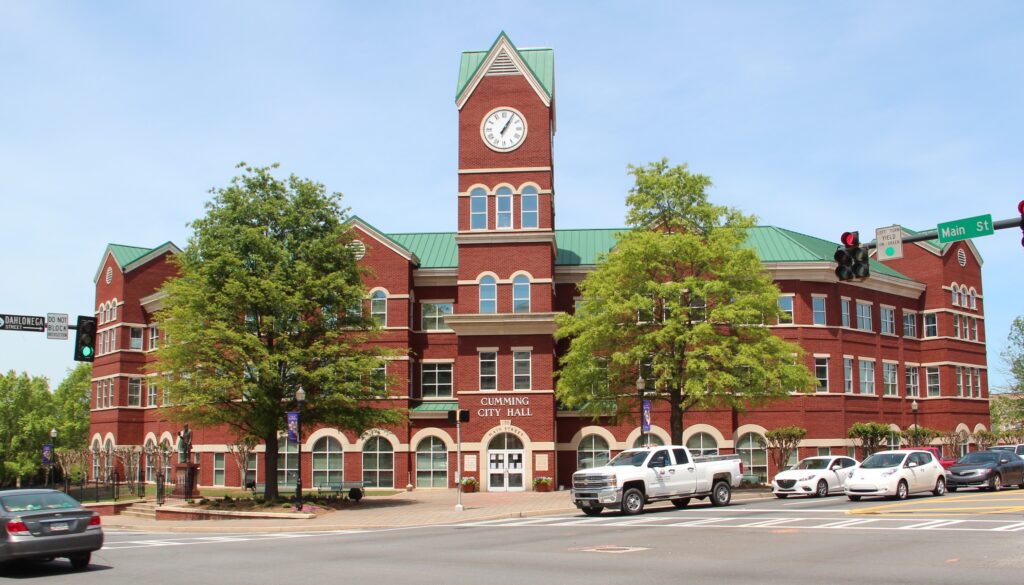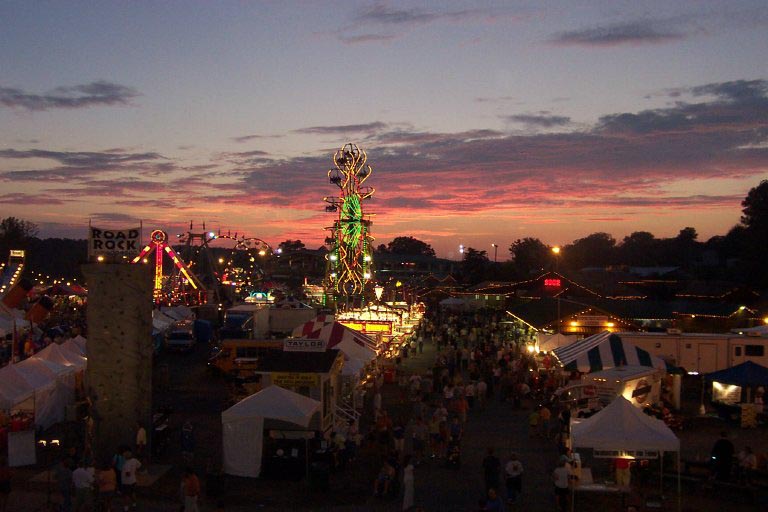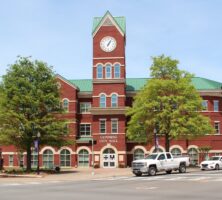The county seat of Forsyth County, Cumming is located forty miles north of Atlanta. The town was founded in 1833, a year after the creation of Forsyth County.
The land for the town, two forty-acre lots that were part of an 1832 Cherokee land lottery, was purchased by local officials in 1833 and 1834. They then divided the town land into smaller lots and sold them off over the next several years, reserving one lot for the county courthouse.
In January 1834 the post office was established, and in December the state legislature incorporated Cumming and officially made it the Forsyth county seat. The town was said to be named for William Cumming, a Georgia native who made his reputation while serving as a colonel in the U.S. Army during the War of 1812 (1812-15).

Cumming benefited from the Georgia gold rush of the 1830s and 1840s as numerous businesses sprung up in town to meet the needs of prospectors. The discovery of gold in California in 1849 lured many local miners away from north Georgia, hurting the town’s economy. The laying of railroads in the 1830s and 1840s stole traffic from the Federal Road, which ran close to Cumming, and resulted in the town’s further economic decline. Union general William T. Sherman’s army bypassed Cumming during the Civil War (1861-65), and after Reconstruction the town changed little, remaining a small, rural community until the 1980s. Local highlights from the period include two fires at the county courthouse, which first burned down in 1900, was rebuilt in 1905 and burned again in 1973.
A reputation for racial intolerance plagued Cumming during most of the twentieth century. In 1912 Georgia governor Joseph M. Brown sent four companies of state militia to the city to prevent a riot by white residents after three African American men reportedly raped a young white woman. However, the militia could do little to prevent a month-long campaign by night riders to force all African American residents out of Forsyth County, an effort that largely succeeded. For several decades thereafter, the county’s Black population was nonexistent.
Few African Americans lived in Cumming in 1987 when the city garnered nationwide attention for its role in a pair of civil rights demonstrations. In January, a small group of demonstrators marched through the streets of Cumming to celebrate Martin Luther King Jr.’s birthday. They were met by a group of protesters from the local Ku Klux Klan chapter, who threw stones and glass bottles at the marchers.

The attack on the marchers drew nationwide attention, and the next week, on January 24, a group of 20,000 people, some from as far away as California and including such well-known civil rights leaders and politicians as Hosea Williams and U.S. senator Gary Hart, gathered in Cumming to hold a civil rights demonstration. While local officials and business leaders attempted to welcome the marchers, a counterdemonstration of 1,000-2,000 also gathered. A large contingent of police and National Guard troops kept the heated situation from erupting into violence. The Brotherhood March, as it came to be known, was one of the largest civil rights demonstrations since the 1960s.
The demonstration marked the beginning of a period of change for Cumming. While the population had remained largely static for more than 100 years, new residents starting moving into the city in the 1980s as the Atlanta metropolitan area expanded. The completion of Georgia 400, a four-lane highway that runs through Forsyth County, helped turn the city into a bedroom community for people employed in Atlanta.

Cumming has several visitor attractions. Each October the town holds the Cumming Country Fair and Festival, which draws patrons from Atlanta and north Georgia. Music fans can enjoy the concerts at Lanierland Park (formerly Lanierland Music Park). Sawnee Mountain Preserve opened its gates to nature enthusiasts in 2005 and provides several miles of hiking trails, picnic areas, and an outdoor amphitheater.
According to the 2020 U.S. census, Cumming’s population was 7,318, an increase from the 2010 population of 5,430.









